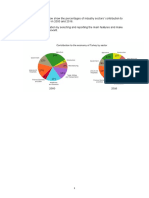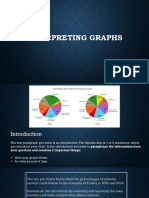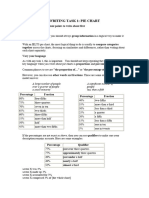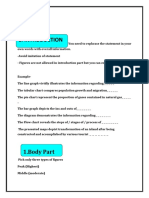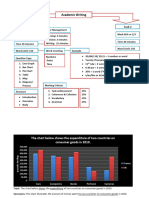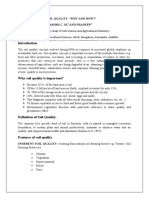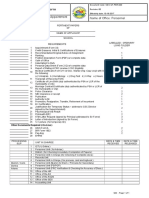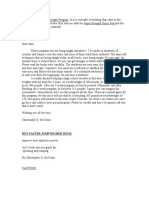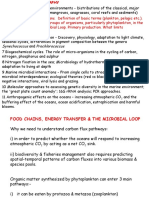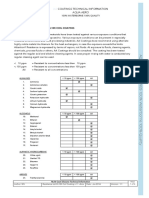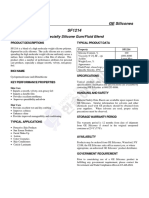0% found this document useful (0 votes)
18 views7 pagesLesson - Table & Pie Chart
The document provides a detailed guide on how to describe pie charts and tables, focusing on the economic contributions of different sectors to Turkey's economy in 2000 and 2016. It outlines the steps for analyzing data, writing introductions, overviews, and body paragraphs, while emphasizing the importance of identifying key features and making comparisons. Additionally, it includes practice tasks for further application of the described techniques.
Uploaded by
Aytac NabiyevaCopyright
© © All Rights Reserved
We take content rights seriously. If you suspect this is your content, claim it here.
Available Formats
Download as DOCX, PDF, TXT or read online on Scribd
0% found this document useful (0 votes)
18 views7 pagesLesson - Table & Pie Chart
The document provides a detailed guide on how to describe pie charts and tables, focusing on the economic contributions of different sectors to Turkey's economy in 2000 and 2016. It outlines the steps for analyzing data, writing introductions, overviews, and body paragraphs, while emphasizing the importance of identifying key features and making comparisons. Additionally, it includes practice tasks for further application of the described techniques.
Uploaded by
Aytac NabiyevaCopyright
© © All Rights Reserved
We take content rights seriously. If you suspect this is your content, claim it here.
Available Formats
Download as DOCX, PDF, TXT or read online on Scribd
/ 7



